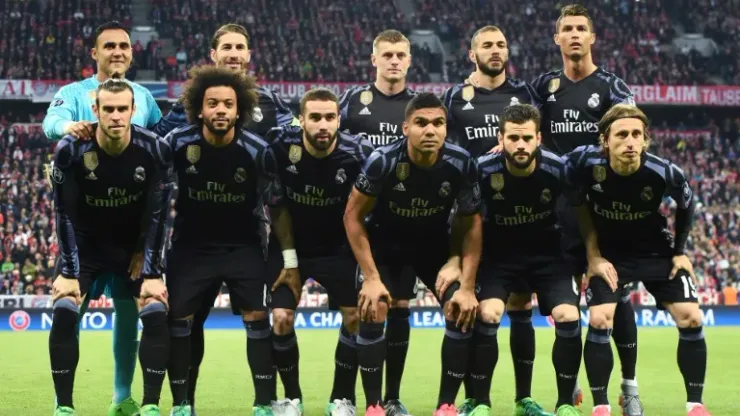Cardiff (United Kingdom) (AFP) – On one side, one of the world’s most powerful clubs and the reigning champions, Real Madrid. On the other, Juventus, a club without the same financial means, yet.
AFP looks at the business models of the two sides who will clash in Saturday’s Champions League final in Cardiff.
– Real Madrid, rich man’s problems
There was a minor earthquake in the Santiago Bernabeu boardroom recently when it emerged that the newly-crowned Spanish champions had been dethroned as the club with the biggest revenue in the world by Manchester United, according to financial analysts Deloitte.
Madrid had held the title for the previous 11 years.
With a turnover of 620 million euros ($697m, £540m) last season, Real nevertheless remain in the top three worldwide.
And president Florentino Perez assures that the club will remain a leading force financially, despite the fact that — like Barcelona — they do not belong to a rich investor but to their members, the “socios”.
Perez returned to the presidency in 2009 after his initial six-year stint ended in 2006, and he is best known for his policy of signing “galacticos”.
“I am one of those who thinks that if Real have the best players in the world in every position, our revenues won’t be a problem,” Perez said in an interview with AFP in December.
He will soon stand for re-election and it is therefore likely the club will get the wallet out to seduce voting members, and give their image a boost along with sales of tickets and shirts.
However, since buying Gareth Bale in 2013 for around 100 million euros, Real have mainly invested in talented young players, like Marco Asensio or the Norwegian teen Martin Odegaard.
Recently, Real agreed a deal worth a reported 40 million euros to sign Brazilian starlet Vinicius Junior, just 16, from Flamengo.
Economically, the other big project of the Perez presidency is the modernisation of the Bernabeu, approved this week by Madrid’s city hall and expected to cost 400 million euros.
The 81,000-capacity venue will be fitted with a retractable roof and will also include room for a shopping centre and possibly a hotel, all of which is to be enveloped inside a metallic, undulating facade.
The operation will be financed by Abu Dhabi-based sponsor IPIC, who will be given naming rights, and the club’s revenues should rise considerably as a result.
– Juve not yet on the same level –
Juventus are by far and away the richest club in Italy and have easily the healthiest finances, but they are a long way away from competing with Real Madrid.
The specialist website Calcio e Finanza states that Juve’s turnover in the last five years has risen from 213 million euros to 387 million at the end of last season.
It is in terms of commercial revenue and marketing, as well as income from their stadium — which is barely half the size of the Bernabeu — that the gulf between the two finalists is most pronounced.
Inter Milan sporting director Piero Ausilio coldly summed up Juve’s power domestically, saying: “After they were relegated (following the Calciopoli scandal in 2006), they worked to a precise business plan…they built their own stadium and worked on their commercial development.”
He added: “They have managed to do all that with continuity and that is why there is a big difference between them and the rest.”
In other words, Juve are becoming one of the biggest European clubs, certain to play in the Champions League every year and with the means to strengthen while weakening their domestic competitors.
They are trying to close the gap to the ogres of Madrid, Barcelona and Bayern Munich, and they have also become very astute in the transfer market.
They have been able to spend big on players like Gonzalo Higuain and Miralem Pjanic while also making some outstanding signings for nothing, or next to nothing.
The likes of Andrea Pirlo, Paul Pogba, Dani Alves, Kingsley Coman and Sami Khedira fall into that category, but will their transfer market savvy help them become champions of Europe?
200+ Channels With Sports & News
- Starting price: $33/mo. for fubo Latino Package
- Watch Premier League, Women’s World Cup, Euro 2024 & Gold Cup
The New Home of MLS
- Price: $14.99/mo. for MLS Season Pass
- Watch every MLS game including playoffs & Leagues Cup
Many Sports & ESPN Originals
- Price: $10.99/mo. (or get ESPN+, Hulu & Disney+ for $14.99/mo.)
- Features Bundesliga, LaLiga, Championship, & FA Cup
2,000+ soccer games per year
- Price: $5.99/mo
- Features Champions League, Serie A, Europa League & Brasileirāo
175 Premier League Games & PL TV
- Starting price: $5.99/mo. for Peacock Premium
- Watch 175 exclusive EPL games per season






